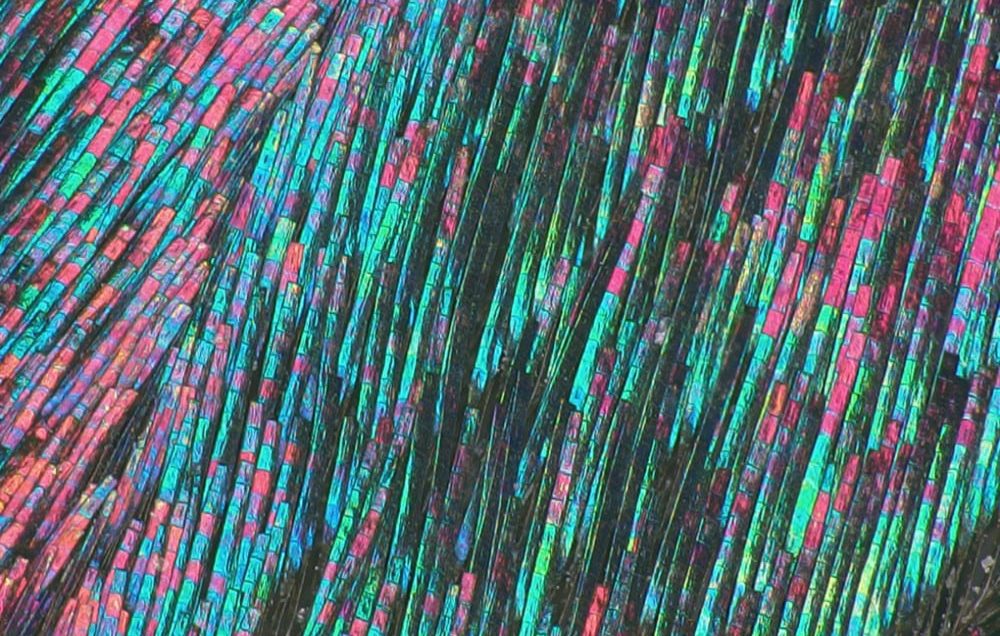CLEMSON – A Clemson University doctoral candidate is embarking on a study of feathers to aid in understanding the evolution from dinosaurs to the birds of today in hopes of advancing modern-day computer-graphics and inspiring future generations.
Jessica Baron, a doctoral candidate in visual computing, is working with a team of Clemson computer scientists and Adam Smith, a paleontologist and curator of the Campbell Geology Museum at the South Carolina Botanical Garden, in a study of feather coloration and evolution.
Baron’s study seeks to gain a better understanding of how feather properties have changed throughout the millions of years of their evolution. She believes this study will help generate more photorealistic computer imagery which will be beneficial in scientific visualization, industry, education and communication.
“It is important to study feathers because they are complex structures that exhibit a large variety of unique properties like coloration, flight and water repellency,” said Baron, who has traveled the world through research and internships. “Feathers also vary across extinct and living species. Studying properties such as color will lead to advancing visualization of extinct dinosaur feathers and understanding complex interactions between light and surfaces of materials like feathers to advance more realistic computer graphics.”
Baron and Smith, along with Clemson visual computing professors Eric Patterson and Daljit Singh Dhillon, received a grant from the National Science Foundation Division of Computer and Information Science and Engineering Core Programs for a multi-year study focused on how feather micro-structures produce color and iridescence. The researchers also will look at the similarities and differences between feathers of modern birds and those of extinct dinosaurs.
“This interdisciplinary collaboration will lead to the first computer-graphics model specifically developed for feathers,” Smith said. “This knowledge will contribute to educational efforts related to birds and other dinosaurs, as well as transform rendering capabilities to create photorealistic images of feathers and feathered creatures for scientific visualization, illustration, documentaries and interactive graphics.”
The study of feathers is important because scientific examination of these unique biological structures have led to technical advances in fields of materials such as velcro, insulators, color-changing materials and aviation.
“Feathers are significantly more complex than hair and scales,” Smith said. “There is still a lot left to discover about how feathers are capable of serving so many different functions.”
Evolution of feathers is an ongoing area of research by paleontologists and developmental biologists. Smith said it was the many feathered dinosaur fossils found starting in the 1990’s that helped to finally put to rest the controversy over bird origins. These feathered dinosaur fossils helped answer the question of whether birds evolved from dinosaurs or from some other unknown reptilian ancestor. The fossil record notes successive stages in feather evolution in dinosaurs.
“The microscopic-scale work we have been funded to continue will provide new data that can be compared with astounding fossils that preserve soft tissues like feathers and their impressions,” Smith said. “Our research hopefully will lead to new insights about the structural properties of feathers, how those properties may have evolved and potential uses for society.”
Knowledge gained from this study will contribute to studies related to birds and other dinosaurs, as well as improve the ability to create photorealistic images of feathers and feathered creatures. Baron has already gained valuable knowledge from working on the project and leading up to it through research during undergraduate and graduate studies. She also has professional experience in computer graphics at Weta Digital, Pixar Animation Studios and Epic Games. In addition, she has also researched feathers in Germany and is a 2020-2021 Fulbright recipient with plans to continue feather-appearance work in Switzerland.
“Researching feathers for computer graphics has been very beneficial in that I have learned and continue to learn more about how a variety of real-world materials such as metals, plastics, glass, skin, hair, fur and more are represented for computer graphics,” Baron said. “In understanding how mathematical functions mimic the interactions of light with those surfaces in the real world and in finding that many phenomena are still not yet described in graphics, I learned that investigating feathers in depth through this project will aid in further understanding complex, natural phenomena such as feathers and impact multiple disciplines.”
After graduation, Baron plans to pursue research and development in computer graphics, particularly rendering, and has been inspired by her mentors in the industry who remain involved with academics and research and by the interdisciplinary and international connections made through studying both feathers and rendering.
-END-
This material is based upon work supported by the National Science Foundation Division of Computer and Information Science and Engineering Core Programs (CISE Award Number (FAIN): 2007974)
Image Credit: Jessica Baron, specimens provided by Melissa Fuentes of the Campbell Museum of Natural History and imaging funding by Clemson University Core Incentivized Access.
Get in touch and we will connect you with the author or another expert.
Or email us at news@clemson.edu

